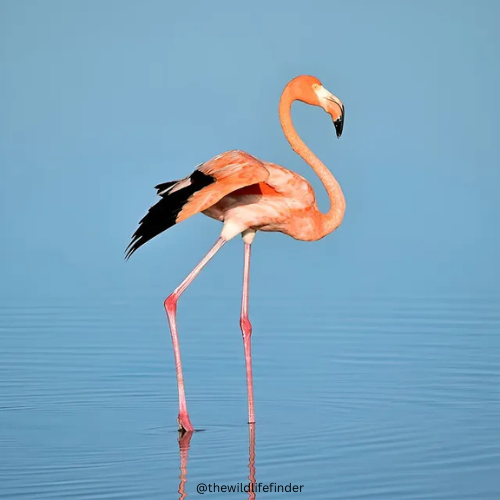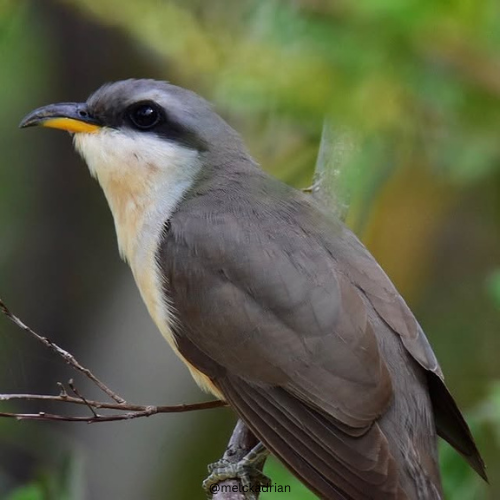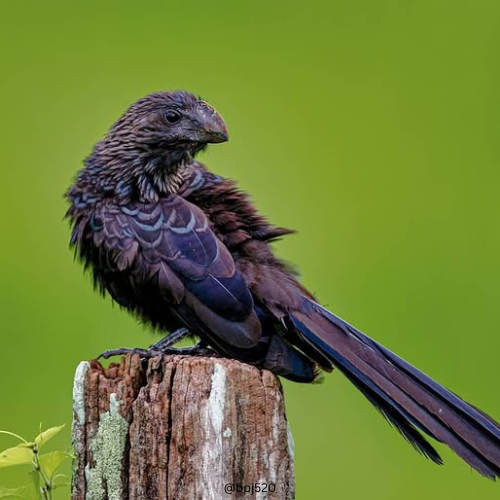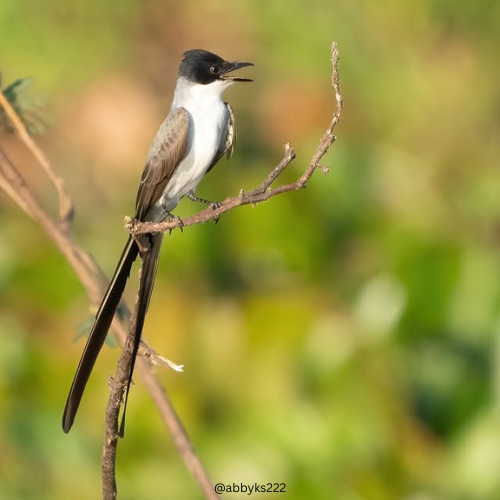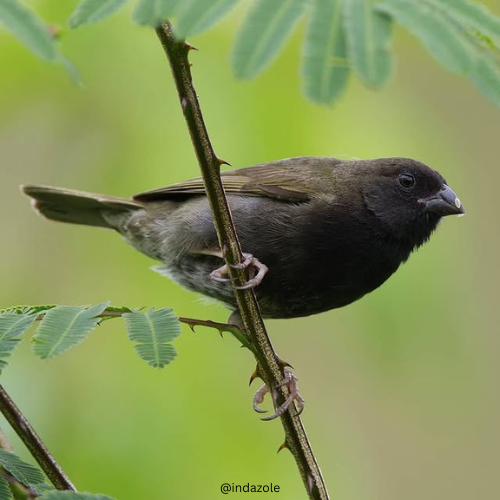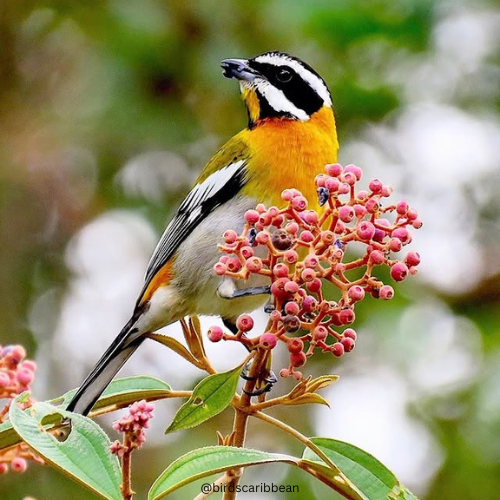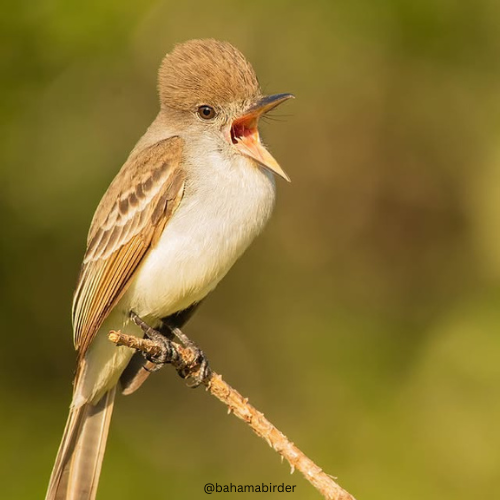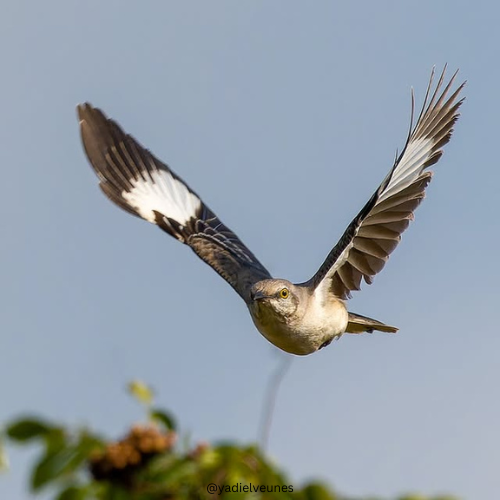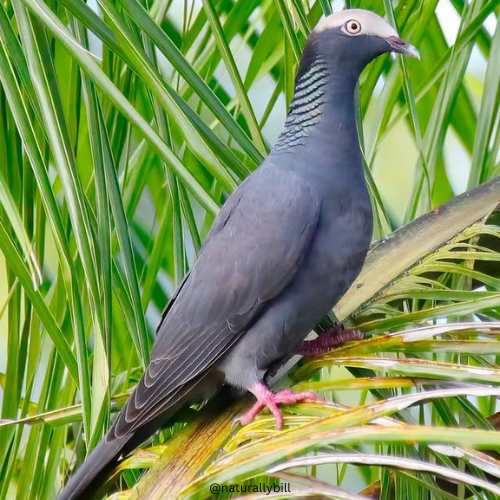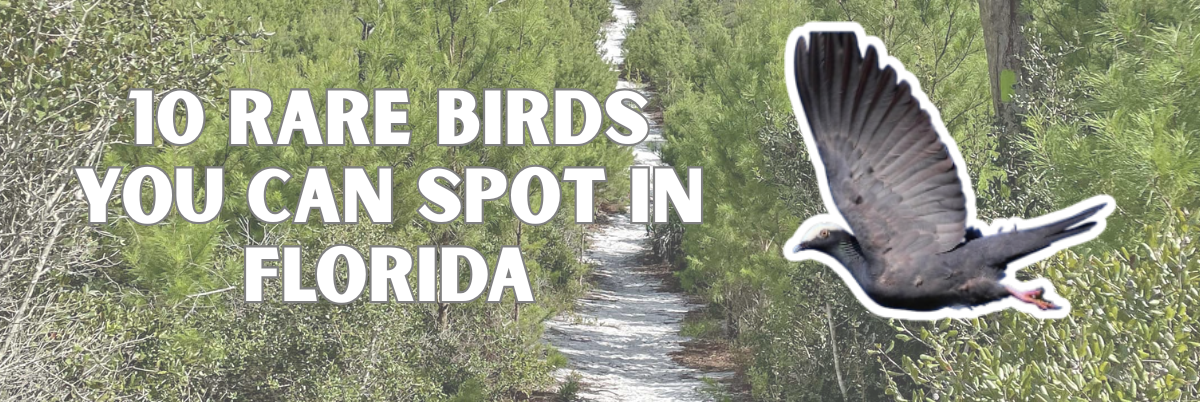
By Avian Feathers Team
Published June 2025
Florida isn’t just a hotspot for beachgoers and gators. It’s also one of the best states for rare bird sightings in the U.S. With its tropical climate and coastal wetlands, Florida attracts surprise visitors from the Caribbean, Central America and even farther. Whether you’re walking the mangroves or scanning the Keys, keep your eyes peeled. These ten rare birds are true treasures to spot.
1. American Flamingo
This bright pink bird looks like it belongs on a postcard. American Flamingos are tall, elegant and love shallow, salty waters. Though often associated with zoos or decor, wild flamingos are making a quiet comeback in Florida. They’re most often seen in the southern part of the state.
Size
Length: 47–57 in (120–145 cm)
Wingspan: 55–65 in (140–165 cm)
Weight: 4.9–6.6 lbs (2.2–3 kg)
Scientific Name: Phoenicopterus ruber
2. Mangrove Cuckoo
Mangrove Cuckoos are shy, long-tailed birds that blend in with dense foliage. They’re known for their soft “caw-caw-caw” calls and are almost always hiding out in Florida’s mangrove forests. Spotting one requires patience and luck. Most birders spend years looking for this elusive species.
Size
Length: 11–13 in (28–33 cm)
Wingspan: 15–16 in (38–41 cm)
Weight: 1.6–2.1 oz (45–60 g)
Scientific Name: Coccyzus minor
3. Smooth-billed Ani
This odd-looking black bird has a long tail and a thick, arched bill. It’s not flashy, but definitely unique. Smooth-billed Anis are native to the Caribbean and South America, and small populations live in southern Florida. They prefer open scrubby areas and are often seen in small groups.
Size
Length: 13–15 in (33–38 cm)
Wingspan: 18 in (46 cm)
Weight: 3.2–4.6 oz (90–130 g)
Scientific Name: Crotophaga ani
4. Fork-tailed Flycatcher
Long tail, sleek body and swift flight. This rare visitor from South America has a dramatic forked tail that trails behind it in flight. Fork-tailed Flycatchers are rarely seen in the U.S., but a few lucky sightings have been recorded in Florida during migration seasons.
Size
Length: 14–16 in (35–41 cm)
Wingspan: 15–17 in (38–43 cm)
Weight: 1.2–1.4 oz (35–40 g)
Scientific Name: Tyrannus savana
5. Black-faced Grassquit
This small finch-like bird comes from the Caribbean and is rare in the U.S. Males are dark with a greenish back, and females are a bit more plain. They’ve been seen in the Keys, especially after strong storms. Their sharp, ticking calls often give them away before you see them.
Size
Length: 4.5 in (11.5 cm)
Wingspan: 6–7 in (15–18 cm)
Weight: 0.3–0.4 oz (9–12 g)
Scientific Name: Tiaris bicolor
6. Western Spindalis
A rare treat for birders in Florida, the Western Spindalis is a bold, colorful species usually found in the Caribbean. Males have black-and-white heads, orange throats and green backs. They’ve been spotted a few times in the Keys. You’ll likely hear their high, buzzy calls before seeing one.
Size
Length: 6 in (15 cm)
Wingspan: 8–9 in (20–23 cm)
Weight: 0.8–1 oz (22–28 g)
Scientific Name: Spindalis zena
7. La Sagra’s Flycatcher
This soft-gray bird with a sweet whistled call has been spotted a few times in Florida. It’s usually found in the Caribbean, especially Cuba and the Bahamas. La Sagra’s Flycatchers like wooded areas and tend to stay still, so spotting one can take some real patience.
Size
Length: 7 in (18 cm)
Wingspan: 11 in (28 cm)
Weight: 0.6–0.9 oz (18–26 g)
Scientific Name: Myiarchus sagrae
8. Thick-billed Vireo
Another visitor from the Caribbean, this vireo has a stubby bill and a chunky shape. It’s greenish above and pale below with bold white “spectacles” around the eyes. Thick-billed Vireos have turned up in the Keys and other southern areas, but they’re far from common.
Size
Length: 5 in (13 cm)
Wingspan: 7–8 in (18–20 cm)
Weight: 0.4–0.6 oz (12–17 g)
Scientific Name: Vireo crassirostris
9. Bahama Mockingbird
Unlike the more common Northern Mockingbird, this species sticks mostly to scrub and coastal thickets. It’s plainer in color, with a more restricted range. Bahama Mockingbirds are rare but show up occasionally in the Florida Keys.
Size
Length: 9–10 in (23–25 cm)
Wingspan: 13–14 in (33–36 cm)
Weight: 1.8–2.2 oz (52–63 g)
Scientific Name: Mimus gundlachii
10. White-crowned Pigeon
This sleek, dark pigeon with a bright white cap prefers mangroves and coastal hammocks. It’s found mostly in the Caribbean but breeds in parts of southern Florida. They’re shy and easily spooked, making them tricky to photograph. They rely heavily on native fruit trees for food.
Size
Length: 12–14 in (30–35 cm)
Wingspan: 20–24 in (50–61 cm)
Weight: 8–9.5 oz (225–270 g)
Scientific Name: Patagioenas leucocephala
Florida truly stands out as one of the best states for rare bird sightings in the U.S. From the vibrant American Flamingo making its quiet comeback in salty waters to the shy Mangrove Cuckoo hidden in dense foliage, each species offers a unique and thrilling encounter. Whether it’s an unexpected visitor like the Fork-tailed Flycatcher during migration or a resident rarity like the White-crowned Pigeon in coastal hammocks, these feathered treasures underscore the state’s incredible biodiversity. Their appearances, often from the Caribbean or farther, make every scan of the mangroves or the Keys an exciting possibility for bird enthusiasts.
Florida’s rare birds offer some of the most exciting sightings in North America.
Which one would you be most thrilled to spot?
Where to Spot Rare Birds in Florida
Florida isn’t just a hotspot for beachgoers and gators. Its tropical climate and coastal wetlands make it one of the best states for rare bird sightings. Here’s where to keep your eyes peeled for these treasures:
Southern Florida (General & Coastal Areas):
- American Flamingo: Most often seen in the southern part of the state in shallow, salty waters.
- Smooth-billed Ani: Look for small populations in southern Florida in open scrubby areas, often in small groups.
- White-crowned Pigeon: Found in southern Florida (where it breeds) preferring mangroves and coastal hammocks.
Florida Keys:
- Black-faced Grassquit: Seen in the Keys, especially after strong storms.
- Western Spindalis: Has been spotted a few times in the Keys.
- Thick-billed Vireo: Has turned up in the Keys and other southern areas, often in scrub and coastal thickets.
- Bahama Mockingbird: Shows up occasionally in the Florida Keys, usually in scrub and coastal thickets.
Mangrove Forests:
- Mangrove Cuckoo: Almost always found hiding out in Florida’s mangrove forests. Spotting one requires patience.
Wooded Areas (General Florida):
- La Sagra’s Flycatcher: Has been spotted a few times in Florida, liking wooded areas.
During Migration Seasons (General Florida):
- Fork-tailed Flycatcher: A rare visitor from South America, recorded in Florida during migration seasons.
Florida’s rare birds offer some of the most exciting sightings in North America.
Which one would you be most thrilled to spot?

